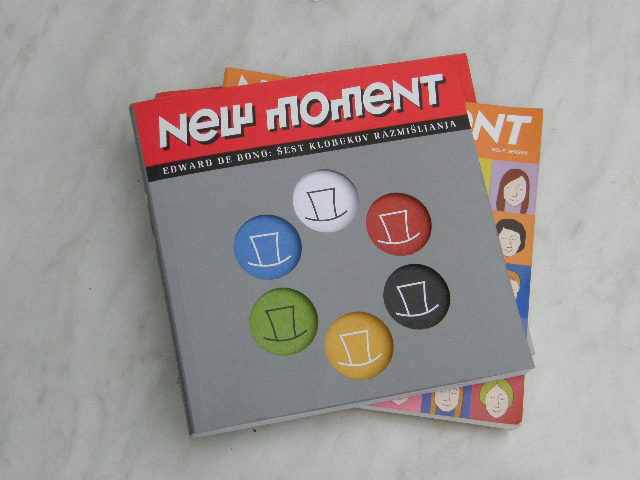Looking for creative teaching activities? Encourage students to work collaboratively and motivate each others’ learning, to clarify their understanding of course content and reflect on different peer perspectives. Take a look at the group work suggestions in our series of blog posts. We recommend booking City’s new Learning Spaces to run these activities.
Summary

‘Six Hats of Critical Thinking’ is a tool used for group discussion and critical thinking about a problem or issue.
Based on Edward de Bono’s work ‘Six Thinking Hats‘, this technique breaks the thinking process down into six components, and can be used to get students to address a problem critically or exploring an idea from a variety of viewpoints.
Why?
This type of group activity can help to develop creativity, will encourage students to consider a problem or issue from a range of different angles, and can develop critical evaluation skills. It is supposed to take the ego out of thinking and allow for an issue to be considered more objectively and comprehensively.
Technique
Each hat represents a different way of thinking, and illustrate the need for addressing a problem from a variety of different angles.
- White: information and facts (‘What information do you have?‘)
- Red: feelings and emotions (‘How do you feel about this?‘)
- Black: negative aspects (‘What is wrong with this?‘)
- Yellow: positive aspects (‘What is right about this?‘)
- Green: possibilities, alternatives (‘What else could be done here?‘)
- Blue: overview of thinking process (‘What is the agenda here?‘)
To apply:
- Organise students into groups of two to four.
- Assign hats according to the required outcomes for the activity. This could involve a single hat for each group (large classes) or specific hats for each group member (smaller classes).
- Students spend a designated period of time discussing the problem, according to which hat they are wearing.
They could also be encouraged to alternate the activity, for example by collectively moving through different hats (e,g, Blue > Red > Yellow > Green > White > Black) or by switching hats with a neighbour to explore different perspectives.
Follow-on activities can include individuals from each group presenting on particular perspectives, a wider discussion is opened up between different groups on the points raised, or a group written task is assigned.
Tips
- Allow a reasonable amount of time for discussions to take place
- This can be used as a one-off activity or as an approach throughout a term. If using a lot, ensure that students’ expectations are set early on in the term.
- There is no set order for using the hats, so the order of use could be alternated during different lessons to more fully explore a range of perspectives
Online suggestion
Try posing the question or problem in a Moodle forum or blog post and specify which hats are to be ‘worn’ by whom in the responses.

Suitable rooms
This activity can be tried in several of our learning spaces. For smaller groups (40 or less), try the following : (College Building) AG08, AG24a, AG24b, A109, A112, A214; (University Building) BLG08, BM02, BM03; (Social Sciences Building) D222. For larger groups (over 40), try the following: (College Building) ALG16; (University Building) BLG07, B307B/C; (Social Sciences Building) D104; (Tait Building) C340.
References
Australian Catholic University Learning and Teaching Centre (2012). Strategies for Cooperative and Collaborative Learning in Large Lecture Groups [PDF]. Available from http://www.acu.edu.au/__data/assets/pdf_file/0003/405768/Large_Group_Lectures_LTC.pdf (Accessed 29/08/14)
De Bono, E. (1992), Six thinking hats for schools: book 3, Hawker Brownlow, Cheltenham, Vic. [online] Available from http://www.parade.vic.edu.au/md/teacher_research_guide/defining/defining_debono.htm (Accessed 29/08/14)
de Bono for Schools, nd. Six Thinking Hats: A Tool to Strengthen Critical Thinking, Collaboration, Communication, and Creativity Skills [online] Available from http://www.debonoforschools.com/asp/six_hats.asp (Accessed 29/08/14)
de Bono Thinking Systems, nd. Six Thinking Hats [online]. Available from http://www.debonothinkingsystems.com/tools/6hats.htm (Accessed 29/08/14)

